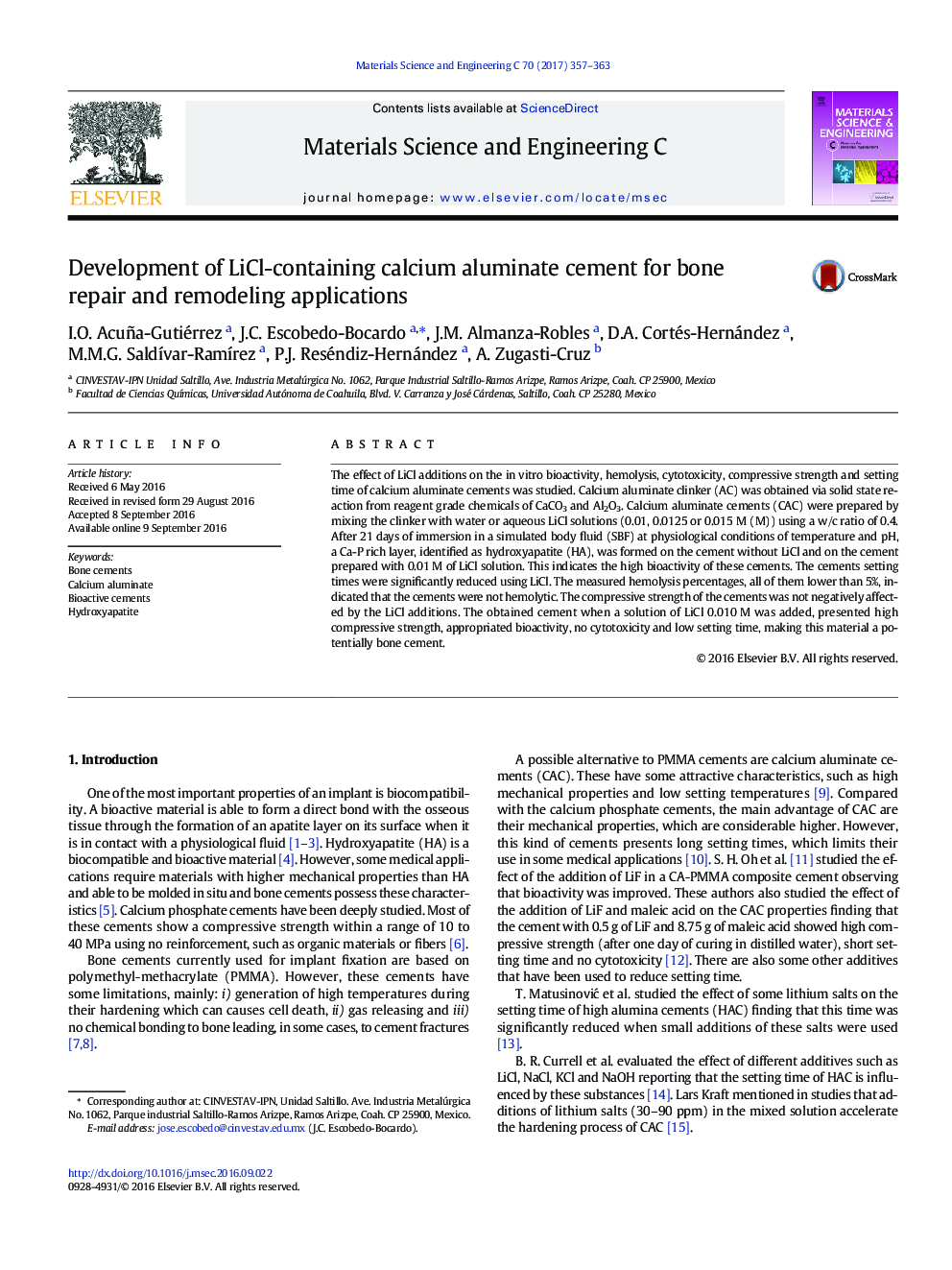| Article ID | Journal | Published Year | Pages | File Type |
|---|---|---|---|---|
| 6481376 | Materials Science and Engineering: C | 2017 | 7 Pages |
â¢Calcium aluminate bone cement was obtained by adding LiCl.â¢The cement prepared with a solution 0.01 M of LiCl presented high bioactivity.â¢The measured hemolysis percentages indicated that the cements were not hemolytic.â¢The cements setting times were significantly reduced using LiCl.â¢The strength of the cements was not negatively affected by LiCl additions.
The effect of LiCl additions on the in vitro bioactivity, hemolysis, cytotoxicity, compressive strength and setting time of calcium aluminate cements was studied. Calcium aluminate clinker (AC) was obtained via solid state reaction from reagent grade chemicals of CaCO3 and Al2O3. Calcium aluminate cements (CAC) were prepared by mixing the clinker with water or aqueous LiCl solutions (0.01, 0.0125 or 0.015Â M (M)) using a w/c ratio of 0.4. After 21Â days of immersion in a simulated body fluid (SBF) at physiological conditions of temperature and pH, a Ca-P rich layer, identified as hydroxyapatite (HA), was formed on the cement without LiCl and on the cement prepared with 0.01Â M of LiCl solution. This indicates the high bioactivity of these cements. The cements setting times were significantly reduced using LiCl. The measured hemolysis percentages, all of them lower than 5%, indicated that the cements were not hemolytic. The compressive strength of the cements was not negatively affected by the LiCl additions. The obtained cement when a solution of LiCl 0.010Â M was added, presented high compressive strength, appropriated bioactivity, no cytotoxicity and low setting time, making this material a potentially bone cement.
